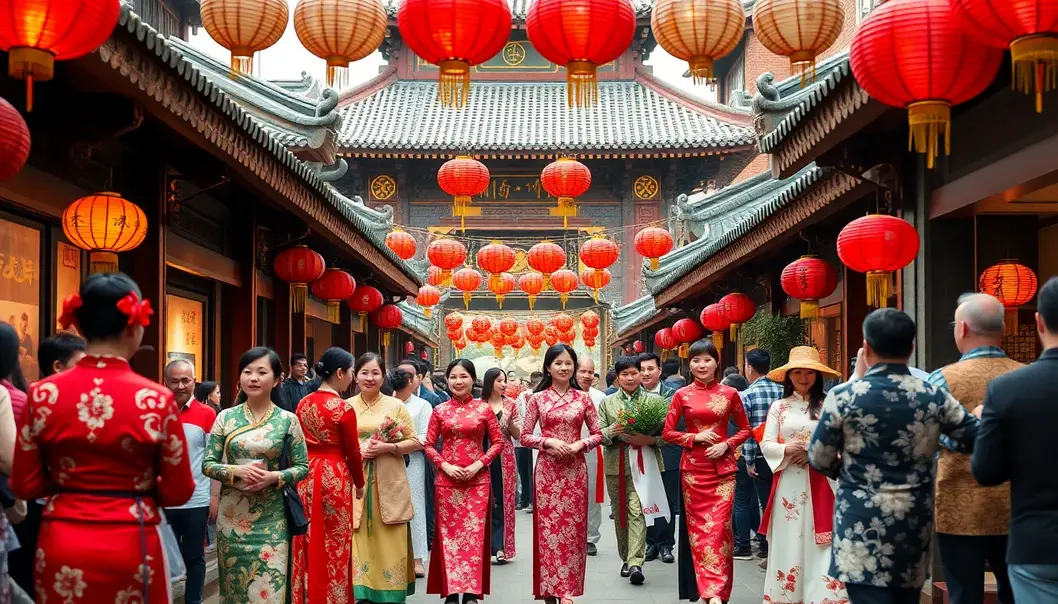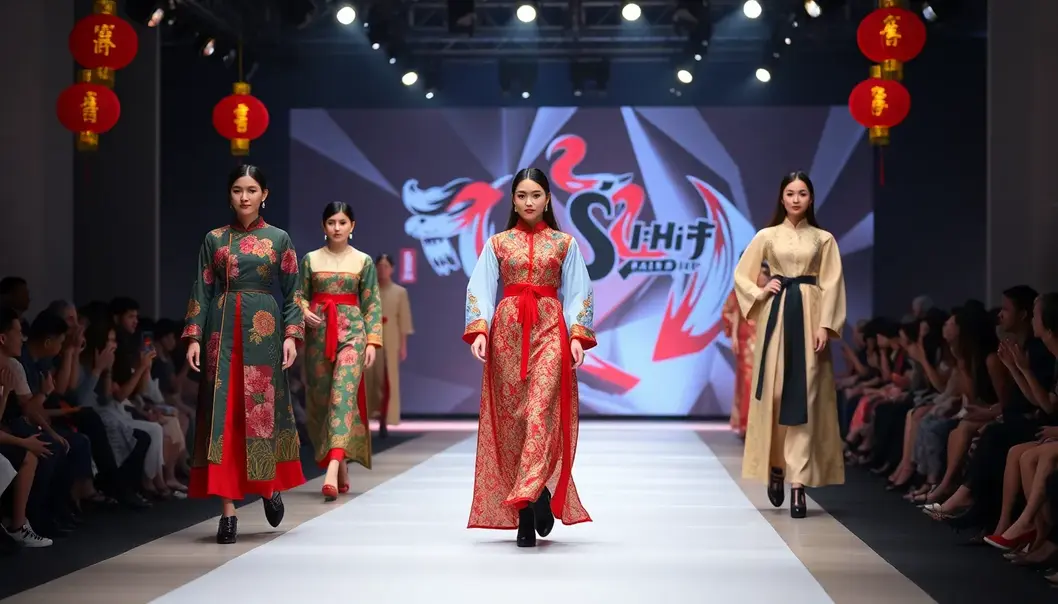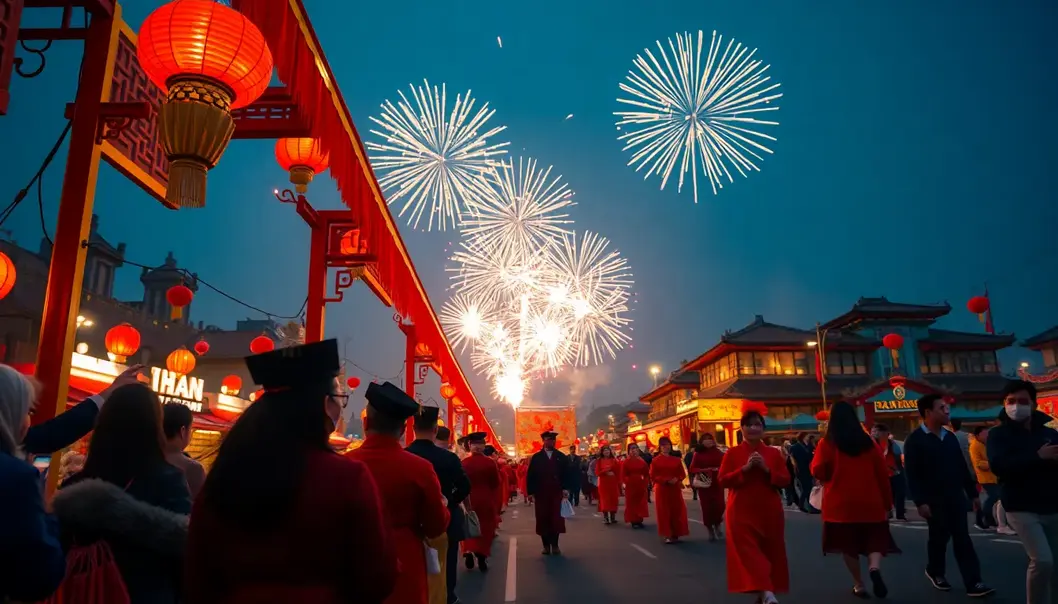The Lunar New Year is not just a festival; it is a canvas painted with the deepest shades of tradition and heritage. Celebrated across Asia and beyond, this flamboyant festivity marks a time of renewal, reunion, and sumptuous fashion. As fireworks light the sky, families gather in couture that sings of cultural heritage. For fashion enthusiasts, it’s a delightful feast for the eyes and a testament to style evolution over millennia. This celebration resonates like a timeless symphony, aligning the threads of the past with the future. Journey with us through style and tradition as we explore the alluring fashion narratives behind Lunar New Year.
The Cultural Fabric: Weaving Traditions and Symbolism

The Lunar New Year is a spectacle of customs and aesthetics, drawing families together to celebrate with elegance that transcends time. Among the most captivating elements are the traditional garments that embody cultural values and ancestral heritage. They transform the celebration into a tableau vivant where every fold and thread tells a story.
Qipao and hanbok are not merely garments but symbols of identity, pride, and continuity. The qipao, with its sleek silhouette and often intricate embroidery, reflects not just style but cultural resonance. Originating from the Qing Dynasty, it has evolved through decades yet retained its aura of grace and poise. Traditionally, qipaos are worn by women during the Lunar New Year to not only embody elegance but to resonate with historical continuity. Their fabric selections, like silk, epitomize luxury and prosperity, making them ideal for festive occasions.
On the other hand, the hanbok of Korea embraces fluid, vibrant lines that capture the essence of harmony and peace. The gentle curves and flowing forms symbolize the pursuit of balance and grace in life, a theme central to the Lunar New Year. The hanbok’s rich colors are not accidental; each hue has a symbolic meaning—red for fortune, yellow for the center of the universe, and blue for vitality.
Color significance extends beyond these garments, saturating the festival in auspicious shades. Red dominates as the harbinger of luck and a safeguard against evil spirits. Gold echoes the promise of wealth and prosperity. Together, these colors establish a visual narrative that resonates through decorations, clothing, and festivities, ensuring the Lunar New Year is not just seen but deeply felt.
Textiles themselves weave stories, each choice imbued with meaning. Silk, often reserved for traditional attire during the festival, represents wealth and protection. Handwoven fabrics epitomize craftsmanship, acknowledging cultural heritage and family dedication.
As these materials dance in harmony, the cultural fabric of the Lunar New Year wraps everyone in its embrace, reminding them of their identity and the transcendent beauty of enduring traditions. The garments we wear are as much a part of celebration as the traditions they represent, creating a brilliant mosaic of past, present, and hopeful future.
Modern Interpretations: Fusion of Heritage and Haute Couture

The harmony between tradition and innovation emerges vibrantly during the Lunar New Year, a festivity celebrated with rich symbolism and cultural significance. During this period, modern designers take a pivotal role in shaping the fashion landscape, breathing new life into traditional attire while maintaining an unwavering respect for heritage.
As the fashion world continually pivots towards sustainable practices, Lunar New Year collections stand as exemplars of ecologically mindful design. Many designers now prioritize eco-friendly materials such as organic cotton and recycled fibers. These efforts not only fulfill environmental responsibilities but also resonate with the ancestral practice of cherishing natural resources. Meticulously crafted garments channel not just sustainability but a timeless elegance that honors the legacies of the past.
Qipao, a quintessential piece often associated with this celebration, finds its way into modern collections with a twist. Designers are reimagining its classic silhouette using innovative cuts and contemporary fabrics. This style evolution sees the qipao adorned in bold, intricate patterns that draw from millennia-old symbols, harmonizing old-world elegance with contemporary flair. Chromatic palettes are thoughtfully selected to manifest prosperity, joy, and fortune—key colors such as red, gold, and jade never stray far from the forefront of these designs.
Fashion houses also echo the storied richness of heritage through avant-garde techniques. Embroidery, once a hallmark of traditional garb, has been revitalized with 3D printing and laser cutting technologies. These methods allow for precision and creativity not possible in bygone eras, cultivating garments that tell stories of resilience and hope.
Moreover, the influence of haute couture is evident in how designers juxtapose tradition with the present. The delicate balance achieved in this interplay communicates a narrative that is both familiar and refreshingly novel. It serves as a reminder that fashion is not just about presenting what is new; it’s about reinterpreting what is beautiful into contemporary contexts.
Integrating modern minimalism with rich textures provides an additional layer to Lunar New Year fashion. The clean, streamlined forms offer a canvas upon which opulent fabrics and emblematic motifs can truly shine. As fashionistas don these garments, they are not just dressing for a festive occasion—they are participating in a vibrant transaction of cultural identity through fashion. Through these efforts, designers and wearers alike coalesce, forming a collective narrative that embraces the melting pot of past and future traditions.
This influential blend, a runway of cultural fusion, represents more than just visionary aesthetics. It exemplifies a commitment to preserving heritage in tandem with forward-looking innovation, ensuring that Lunar New Year fashion continues to mesmerize the world stage with its grace and dynamic spirit.
Final words
Lunar New Year is a celebration where tradition and modernity elegantly intertwine. The rich tapestry of fashion—from traditional garments to innovative couture—tells stories of heritage while embracing the future. As we bid farewell to the old and welcome the new, fashion remains the elegant thread that connects us to cultural roots, weaving a narrative that resonates across generations.
Elevate your wardrobe with our exclusive Lunar New Year collection. Embrace tradition with style.
Learn more: https://www.elegantayunar.com/lunar-collection
About us
Elegant Ayunar offers an exclusive range of clothing that celebrates cultural heritage with a contemporary edge. Our Lunar New Year collection merges tradition with fashion-forward designs, providing you with pieces that are both meaningful and stylish. Experience the beauty of cultural narratives worn everyday.

